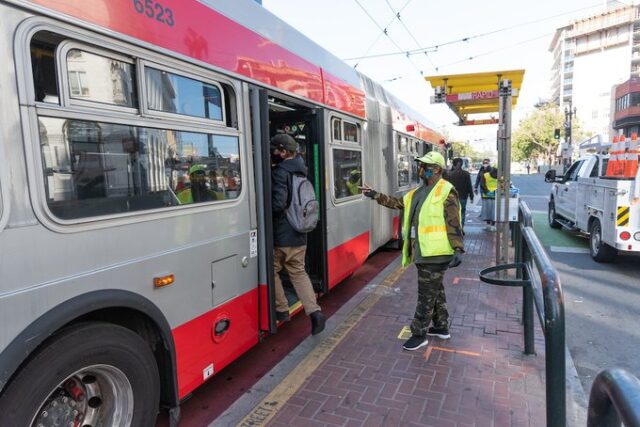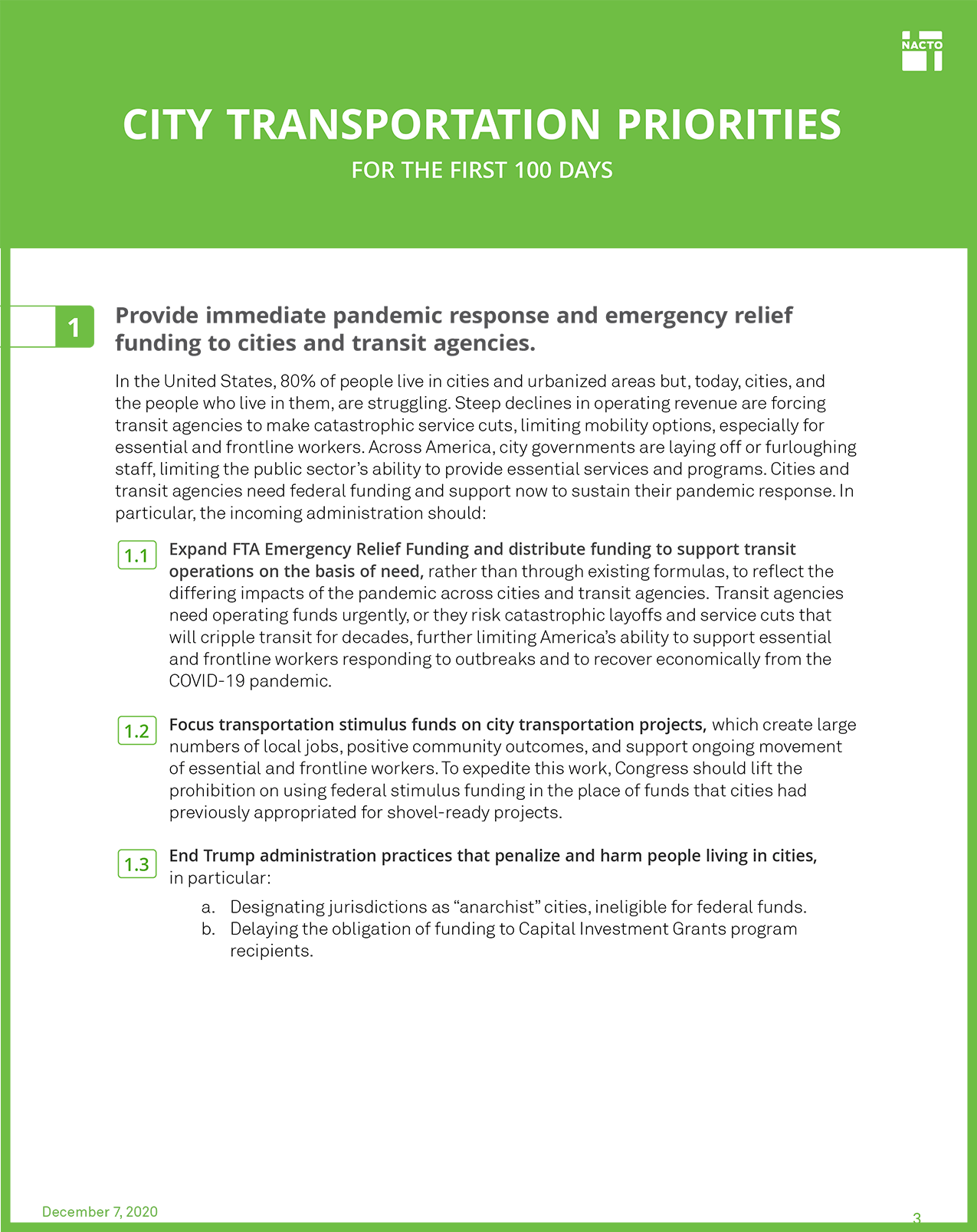In the United States, 80% of people live in cities and urbanized areas. Today, America’s cities and the people who live in them are struggling, and are facing the intertwined crises of a global pandemic, systemic racism, and accelerating climate change. Across the country, city governments are laying off or furloughing staff, further limiting the public sector’s already diminished ability to provide essential services and programs. Access to mobility–the physical ability to reach jobs, school, and healthcare–in this country, already unequal, has worsened as transit agencies make painful cuts to operations, with further, catastrophic losses on the horizon.

Transportation connects people to opportunities.
And yet, while cities have seen a disjointed, chaotic response by the federal government, they have innovated and responded to this crisis with ingenuity: changing cleaning protocols, fabricating plexiglass barriers for bus operators, manufacturing hand sanitizer, using streets and sidewalks for COVID testing and health services, printing signage for restaurant pick-up zones, revising bus networks to prioritize essential workers, and finding ways to bring down speeds on streets emptied of normal traffic volumes.
All this with few resources. While cities continue to respond with creative solutions–ensuring that essential workers can get to where they need to go, and offering options for businesses to stay open–the limits of what local governments can do by themselves are already clear.
The incoming Biden-Harris Administration, in inheriting the country’s largest-scale disaster in nearly a century, is also inheriting a mandate to correct the mistakes of the past. As this year exposed how our antiquated transportation policies and infrastructure exacerbated the effects of the pandemic, it also exposed how insufficient it would be to simply build back what we had in place. The new administration must chart a new course for American mobility that puts people first.
Transportation connects people to opportunities, and nothing is more critical to a just recovery than our mobility systems. Investing in cities and transit is the best way to revive the economy quickly and ensure resources and prosperity reach communities most harmed by the pandemic.
NACTO, as a coalition of 80 cities and transit agencies from across the U.S., is calling on the Biden-Harris Administration to set a new course for mobility in America, through executive actions and in partnership with Congress.
 There is a lot we can do in the first 100 days of this new administration with a strong Federal partner. Specifically, we call on the incoming Administration to:
There is a lot we can do in the first 100 days of this new administration with a strong Federal partner. Specifically, we call on the incoming Administration to:
- Provide immediate pandemic response and emergency relief funding to cities and transit agencies. Cities and transit agencies are facing a fiscal cliff, and will not be able to provide essential mobility services without federal help.
- Set forth a multi-modal vision for U.S. mobility to meet the challenges of the 21st century. U.S. transportation policy has not been fundamentally updated since the 1956 Interstate Highway Act. The limitations of ‘business-as-usual’ have become tragically clear this year, and a new Administration has the opportunity to chart a more just, sustainable, and prosperous path forward.
- Champion long-term investment in cities and public transit to ensure a just, sustainable recovery. Cities are the economic engines of the U.S., with more than 50% of U.S. GDP coming from just 25 cities and metro areas. America’s ability to recover depends on the strength of our metro areas and accessible, reliable, convenient mobility options for the people who live and work there.
- Overhaul federal design standards to meet the safety and mobility needs of urban areas, and to streamline approvals for projects that support the Administration’s sustainability and equity goals. Existing “one-size-fits-all” federal design guidance is not compatible with the needs or goals of dense, multi-modal urban areas. Through executive actions, and renewed leadership at USDOT, FHWA, NHTSA, and other executive branch agencies, streets can be redesigned to prioritize safety and accessibility for everyone who uses our roads: pedestrians, cyclists, and transit riders alike.
Read our full list of recommendations to the Biden-Harris team (pdf) for the concrete actions that the new Administration can take on day 1 through 100 to recover from the worst crisis our cities have seen in generations.
The Biden-Harris campaign made history by winning on a platform promising to address climate change, racism, and the ongoing economic crisis. To deliver on these commitments, the incoming Administration must take swift action to plan, design, and invest in a transportation system that supports the needs and efforts of cities and their surrounding areas.
We look forward to working in partnership to build back better, together.